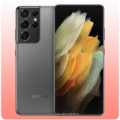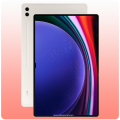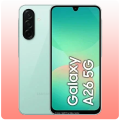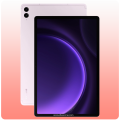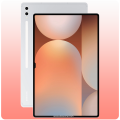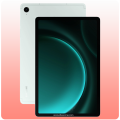- Home
- All Products
- Mobiles
- Samsung Galaxy S25 Edge
Samsung Galaxy S25 Edge


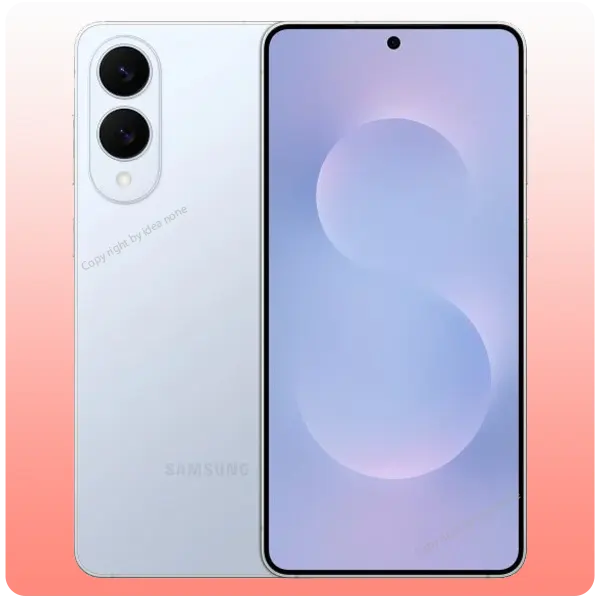
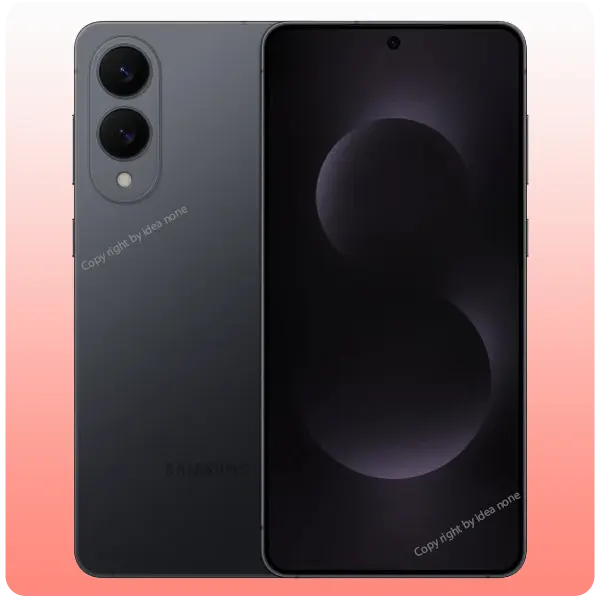

-
CPU: Snapdragon 8 Elite (3 nm)
-
RAM: 12GB
-
Storage: 256GB, 512GB
-
Display: Size 6.7 inches, LTPO AMOLED 2X, 120Hz
-
Main Camera: 200 MP + 12 MP
-
Selfie Camera: 12 MP
-
Battery: 3900 mAh
-
OS: Android 15, One UI 7
Overview
General
| Device Type | Smart Phone |
| Announced | 13-05-2025 |
| Released | 29-05-2025 |
| Status | Available |
| International Price | $1,099 |
| Indian Price | ₹1,09,999 |
| BD Unofficial Price | ৳1,35,000 |
Design
| Type Design Type called form factor refers to a mobile phone's size, shape, and style as well as the layout and position of major components of phone. There are three major form factors seen in mobile phones => bar phones, folding phones and sliding phones. | Bar |
| Dimensions | 158.2 x 75.6 x 5.8 mm (6.23 x 2.98 x 0.23 in) |
| Weight | 163 g (5.75 oz) |
| Body Thickness | 5.8mm |
| Protection | Glass front (Gorilla Glass Ceramic 2), titanium frame, glass back (Gorilla Glass Victus 2) |
| Colors | Titanium Icyblue, Titanium Silver, Titanium Jetblack |
| Water Resistant | IP68 dust tight and water resistant (immersible up to 1.5m for 30 min) |
Network
| Technology | GSM / HSPA / LTE / 5G |
| SIM | Nano-SIM + Nano-SIM + eSIM + eSIM (max 2 at a time) , Nano-SIM + eSIM + eSIM (max 2 at a time) |
| Speed | HSPA, LTE (CA), 5G |
Display
| Display Type Display Technology => A number of display technologies and types used in mobile phones => TFT (Thin Film Transistor), IPS (In-Place Switching), OLED (Organic Light Emitting Diode), AMOLED (Active-Matrix Organic Light-Emitting Diode), Super AMOLED (an even advanced version of AMOLED), Resistive Touchscreen (Resistive touchscreens contain two layer of conductive material with a very small gap between them which acts as a resistance), Capacitive Touchsceen (Capacitive touchscreen technology consists of a layer of glass coated with a transparent conductor) | LTPO AMOLED 2X, 120Hz, HDR10+ |
| Size | 6.7 inches, 110.2 cm2 (~92.1% screen-to-body ratio) |
| Resolution | 1440 x 3120 pixels, 19.5:9 ratio |
| Pixel Density Pixel Density (PPI) is refers to the concentration of pixels on a particular display, measured in pixels per inch (ppi). Pixel density is calculated by dividing the diagonal pixel resolution of a display by its diagonal size, higher pixel density better display quality. | (~513 ppi density) |
| Refresh Rate | 120Hz |
| Display Protection Display Protection => Gorilla Glass is a special alkali-aluminosilicate glass shield with exceptional damage resistance that helps protect mobile displays from scratches, drops, and bumps of everyday use, It is always better to go for a smartphone with Gorilla Glass for that added protection and peace of mind. | Corning Gorilla Glass Ceramic 2 |
| Display Brightness | 2,600 nits |
Main Camera
| Camera 1 Camera is able to capture photographs and usually videos, The most important characteristics of a camera are the resolution (measured in megapixels), lens focus type (fixed or automatic), higher megapixel cameras are known to capture higher quality photos, but not always a good measurement of the photos quality. | 200 MP, f/1.7, (wide), 1/1.56", PDAF, OIS |
| Camera 2 | 12 MP, f/2.2, (ultrawide), PDAF |
| Video | 8K@30fps, 4K@30/60/120fps, 1080p@30/60/120/240fps |
| Camera Features | Best Face, LED flash, HDR, panorama |
Selfie Camera
| Camera 1 Camera is able to capture photographs and usually videos, The most important characteristics of a camera are the resolution (measured in megapixels), lens focus type (fixed or automatic), higher megapixel cameras are known to capture higher quality photos, but not always a good measurement of the photos quality. | 12 MP, f/2.2, (wide) |
| Video | Yes |
Software
| Operating System OS => Every computer system run on a base software called Operating System (OS). Operating System controls all basic operations of the computer (such as smartphone, PDAs, tablet computers and other handheld devices). The Operating System allows the user to install and run third party applications (apps), apps are used to add new functionality to the device. | Android 15 |
| User Interface UI or user interface of a device is the look and feel of the on-screen menu system. How it works, its color scheme, how it responds to button presses, all of these things are part of the user interface. | One UI 7 |
Hardware
| Chipset Chipset is a group of integrated circuits designed to perform one or a more dedicated functions, often with real time computing constraints, Popular smartphones are equipped with more advanced embedded chipsets that can do many different tasks depending on their programming. | Qualcomm SM8750-3-AB Snapdragon 8 Elite (3 nm) |
| CPU CPU (Central Processing Unit) mostly known as processors, CPU processes instructions in order to carry out certain functions that make your device operate properly. Processors are often described as the brain of computers, smartphones and tablets, Smartphones and tablets rely on processors to carry out their every task, Processors are an incredibly important factor in selecting any type of computing device, including your smartphone. |
7-core (2x4.47 GHz Oryon V2 Phoenix L + 5x3.53 GHz Oryon V2 Phoenix M) |
| GPU GPU (Graphics Processing Unit) is a single-chip processor designed to rapidly manipulate and alter memory to accelerate the creation of images in a frame buffer intended for output to a display, This includes things such as lighting effects, object transformations, and 3D motion. | Adreno 830 |
| RAM (Memory) RAM (Random Access Memory) is a type of computer memory that can be accessed randomly, any byte of memory can be accessed without touching the preceding bytes that allows information to be stored and accessed quickly from random locations. RAM is the most common type of memory found in computer systems, smartphones, tablets and other electronic devices. | 12GB |
| Internal Storage Internal Storage is a data storage space (flash memory) mostly used in smartphones, tablets and other electronic devices where operating system, apps, music, photos, videos, files and other user data Is stored. | 256GB , 512GB |
| Card Slot Memory Card Slot is a special slot for inserting a memory card. Memory cards allow you to expand the phone's built-in memory, A memory card (sometimes called a flash memory card or a storage card) is a small storage medium used to store data such as text, pictures, audio, and video, for use on small, portable or remote computing devices such as mobile phones, mp3 players, digital cameras. | No |
| Sensors Sensors are electronic components that detects and responds to some type of input from the physical environment. The specific input could be light, heat, motion, moisture, pressure and location, The output is generally a signal that is converted to use in computing systems, a location sensor, such as a GPS receiver is able to detect current location of your electronic device. |
Fingerprint (under display, ultrasonic), accelerometer, proximity, gyro, compass, barometer Samsung DeX Ultra Wideband (UWB) support |
Connectivity
| Bluetooth Bluetooth is a wireless communications technology for exchanging data between mobile phones, headsets, computers and other network devices over short distances without wires, Bluetooth technology was primarily designed to support simple wireless networking of personal consumer devices. | 5.4, A2DP, LE |
| Wi-fi Wi-Fi is a popular wireless networking technology using radio waves to provide high-speed network connections that allows devices to communicate without cords or cables, Wi-Fi is increasingly becoming the preferred mode of internet connectivity all over the world. | Wi-Fi 802.11 a/b/g/n/ac/6/7, tri-band, Wi-Fi Direct |
| USB | USB Type-C 3.2 |
| Placement GPS The Global Positioning System is a satellite-based radio navigation system, GPS permits users to determine their position, velocity and the time 24 hours a day, in all weather, anywhere in the world, In order to locate your position, your device or GPS receiver must have a clear view of the sky. | GPS, GLONASS, GALILEO, BDS |
| NFC NFC (Near field communication) is a set of standards for smartphones and similar devices to establish peer-to-peer radio communications with each other by touching them together or bringing them into proximity, usually no more than a few inches. | Yes |
| Wireless Charging Wireless Charging (Inductive Charging) uses an electromagnetic field to transfer energy between two objects. This is usually done with a charging station. Energy is sent through an inductive coupling to an electrical device, which can then use that energy to charge batteries or run the device. |
Sound
| Loudspeaker | Yes, with stereo speakers |
| Headphone Jack |
Battery
| Battery Type Battery Type => Cell phones run on various kinds of batteries depending on the manufacturer, phone size or shape and features. There are basically four types of cell phone batteries => Lithium Polymer, Lithium Ion, Nickel Metal Hydride and Nickel Cadmium. | Not Mentioned |
| Capacity Battery Capacity is a measure (typically in Amp-hr) of the charge stored by the battery, and is determined by the mass of active material contained in the battery. The battery capacity represents the maximum amount of energy that can be extracted from the battery under certain conditions. | 3900 mAh |
| Charging | 25W wired, PD, QC2.0, 55% in 30 min |
Performance Tests
| AnTuTu | 2,662,677 |
| GeekBench |
Single-Core: 3,118 Multi-Core: 9,675 |
Overall Review
🌟 Samsung Galaxy S25 Edge Full Review – Power Meets Elegance
🔍 Quick Verdict
The Samsung Galaxy S25 Edge is a futuristic flagship with an ultra-thin design, cutting-edge display, and next-gen Snapdragon 8 Elite chip. It excels in speed, camera capabilities, and durability but comes with a modest battery and lacks a telephoto lens. Still, the Samsung Galaxy S25 Edge feels like a statement device — sleek, powerful, and boldly premium.
✅ Samsung Galaxy S25 Edge: Top Features & Highlights
🧱 Design & Build
- Material: Titanium frame, Gorilla Glass Ceramic 2 (front), and Gorilla Glass Victus 2 (back) — unmatched durability.
- Slim profile: At 5.8mm, the Galaxy S25 Edge is one of the thinnest flagships ever made.
- Lightweight: Just 163g, making it very comfortable for one-handed use.
- Water & Dust Resistance: IP68 rated, so the Samsung Galaxy S25 Edge survives splashes, dust, and quick submersion.
- Colors: Titanium Icyblue, Titanium Silver, Titanium Jetblack — clean and bold options.
📺 Display
- 6.7″ LTPO AMOLED 2X, 120Hz refresh rate.
- Resolution: 1440 x 3120 pixels (~513 ppi) — extremely sharp.
- Brightness: Peak 2600 nits, easily readable even in direct sunlight.
- HDR10+ support: Brings vivid colors and deep contrast to videos.
- Protection: Gorilla Glass Ceramic 2 on the display — more scratch-resistant than traditional glass.
🔥 The Samsung Galaxy S25 Edge offers one of the brightest, clearest, and most color-accurate displays ever seen in a smartphone.
🚀 Performance
- Chipset: Snapdragon 8 Elite (3nm) – Qualcomm’s best yet.
- CPU: 7-core configuration with custom Oryon V2 Phoenix cores (2×4.47 GHz + 5×3.53 GHz).
- GPU: Adreno 830 — built for high-end gaming and AI tasks.
- Software: Android 15 with One UI 7 – smooth, polished, and feature-rich.
📊 Benchmarks (Samsung Galaxy S25 Edge):
- AnTuTu Score: 2,662,677
- Geekbench 6:
- Single-core: 3,118
- Multi-core: 9,675
⚡ The Samsung Galaxy S25 Edge is a performance beast — faster than most laptops.
📸 Camera
- Rear Cameras:
- 200MP (wide) with OIS and PDAF
- 12MP (ultrawide) with PDAF
- Video Capabilities:
- 8K@30fps, 4K@30/60/120fps, 1080p@30/60/120/240fps
- Front Camera: 12MP with wide-angle lens
AI Features:
- Best Face: Automatically selects the best face for each person in group photos.
- HDR & Night Mode: Enhanced night photography and vibrant daytime shots.
📸 Samsung Galaxy S25 Edge delivers flagship-level photography, although it misses out on a dedicated zoom (telephoto) lens.
🔋 Battery & Charging
- Battery Size: 3900 mAh
- Charging: 25W fast charging, PD & QC2.0
- 55% charge in 30 minutes
- No Wireless Charging Mentioned (but likely supported unofficially)
⚠️ This is one area where the Samsung Galaxy S25 Edge compromises — the battery capacity is below the 2025 flagship average.
🔗 Connectivity & Extras
- 5G support: Extensive bands for global and US coverage (including mmWave in USA)
- Wi-Fi 7, Bluetooth 5.4, USB-C 3.2, NFC
- Samsung DeX: Use your phone as a PC
- UWB Support: For smart location tracking and secure file sharing
- Under-Display Ultrasonic Fingerprint Scanner
❌ Samsung Galaxy S25 Edge: Downsides
| Issue | Details |
|---|---|
| 🔋 Battery | 3900 mAh is small for a flagship |
| ⚡ Charging Speed | 25W is below what rivals like Xiaomi, OnePlus, or Realme offer |
| 🔍 No Telephoto Lens | Limits versatility in zoom shots |
| 💾 No microSD Slot | Storage is fixed — choose wisely |
💬 Final Verdict: Should You Buy the Samsung Galaxy S25 Edge?
If you’re looking for:
- A lightweight, ultra-premium smartphone,
- Top-tier performance and display,
- Flagship photography with futuristic AI features,
Then the Samsung Galaxy S25 Edge is a fantastic choice.
But if you want:
- Big battery life,
- Faster charging, or
- Zoom lens photography,
Disclaimer Note
Disclaimer: Prices listed are for reference only and may vary. We strive to keep information up to date but cannot guarantee accuracy. Please verify with the retailer before making a purchase.

